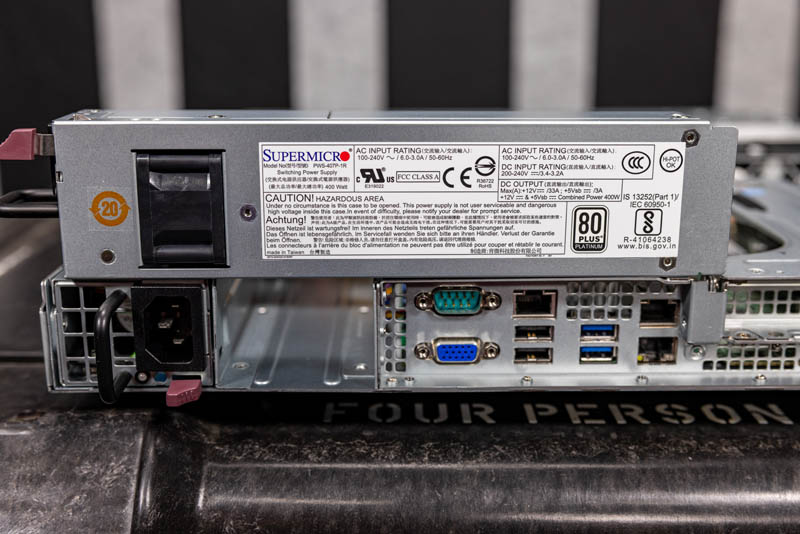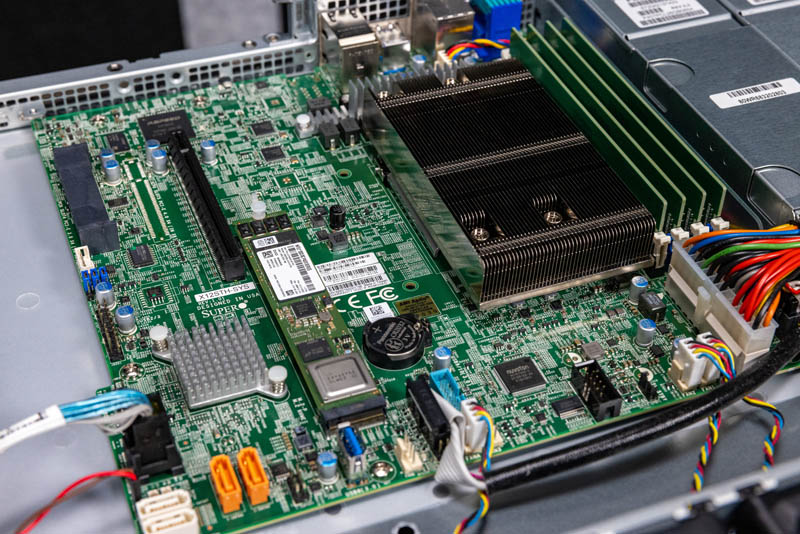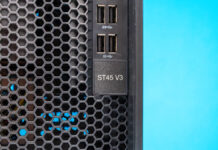Supermicro SYS-510T-MR Power Consumption
The redundant power supplies in the server are 400W units. These are 80Plus Platinum-rated units. It is common in this segment to see single PSUs as well as PSUs that are only Bronze or Gold-rated so this is actually a relatively nice solution for this segment.

We saw an idle of around 33W. We saw maximum power consumption of just over 130W. Practically, this is very important because it was easily able to exceed 110-120W even without a fully populated configuration. In this market, that is important because one of the key target markets is the dedicated server/low-cost web hosting and colocation market. These systems with higher-end CPUs can exceed the maximum power of inexpensive 1A 110V/120V hosting plans. It does require higher-end workloads to hit these power figures, but it is something to keep in mind when configuring the system. There are lower power processors in the 65W TDP range that one would likely not have to worry about. On the other hand, if one adds high-end cards like DPUs, high-end NICs, RAID controllers, and a full set of drives, it will go over the maximum power budget for these plans. Of course, technology is marching forward so power consumption in data centers is rising quickly outside of this segment.
Note these results were taken using a 208V Schneider Electric / APC PDU at 17.0C and 62% RH. Our testing window shown here had a +/- 0.3C and +/- 2% RH variance.
STH Server Spider: Supermicro SYS-510T-MR
In the second half of 2018, we introduced the STH Server Spider as a quick reference to where a server system’s aptitude lies. Our goal is to start giving a quick visual depiction of the types of parameters that a server is targeted at.

This is a fairly good all-around server, but it is clearly not designed for density. In an age where we can get 1U servers with 128 cores/ 256 threads, 4TB+ of memory, and many NVMe SSDs/ accelerators, an entry-level server is optimized around cost instead of density. As such, this system has a solid number of configuration options. These allow the system to address a number of use cases at the lower-density end of the spectrum.
Final Words
This server at least has an easy feature to call out as our favorite, the Supermicro X12STH-SYS motherboard. That fun aside, this is an interesting system. On one hand, there are clear areas where the entry server platform is advanced. Rocket Lake-E has PCIe Gen4 and DDR4-3200 support.

The Intel Xeon E-2300 series does not add one important feature, new cores whether they are performance or efficient cores, to the segment. As a result, some may look at Intel’s platform here and call out stagnation. Beyond that though, Supermicro has added new updated features to its servers such as the AST2600 BMC, updated management interface, support for an internal SD HBA/ RAID controller, and so forth. It certainly feels like this is a solid generational evolution, but not necessarily a revolution in terms of capacity. Still, if you are purchasing a server, it will be harder to recommend the previous generation.

Overall, the Supermicro SYS-510T-MR is a solid server that brings a host of new features and functionalities to the entry-level server market. These new features come from both the underlying Intel Xeon platform as well as the new features that Supermicro is adding to the platform bringing more parity between this and its higher-end servers.




We saw an idle of around 33kW. With two 400w power supplies?
33w?
How much idle watts with 1 psu, 1 sata ssd, 2 dimms, no network, no pcie, no fans connected?